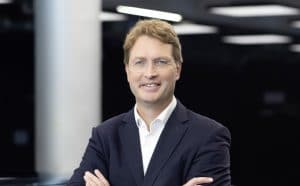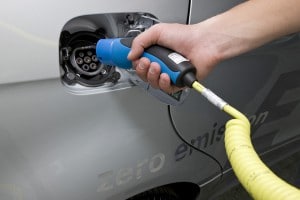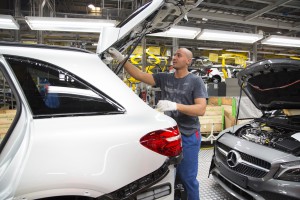
Ola Källenius, chairman of the Board of Management, Daimler AG and CEO of Mercedes-Benz Cars, outlined the new corporate strategy.
Daimler AG is preparing to cut as many as 1,100 jobs as it prepares to deploy a new sustainable business strategy with a clear commitment to carbon dioxide-neutral mobility.
“We are positioning the company for the transformation with a clear strategy for the future,” said Ola Källenius, chairman of the Board of Management of Daimler AG and Mercedes-Benz AG. “The expenditure needed to achieve the carbon dioxide targets require comprehensive measures to increase efficiency in all areas of our company.”
“This also includes streamlining our processes and structures. This will have a negative impact on our earnings in 2020 and 2021. To remain successful in the future, we must therefore act now and significantly increase our financial strength,” he said.
(Daimler AG moves forward with re-organization of key units)
Källenius, who replaced Dieter Zetsche in May, declined to verify the scope of the job cuts but the German Works Council, which represents the company’s white-collar employees have notified employees that as many as 1,100 jobs could be eliminated, pending discussion with Daimler’s management.
Daimler’s goal is to reduce personnel costs by 1 billion euros by the end of 2022, Källenius said.
The company assumes that the premium market for cars will continue to grow sustainably and faster than the volume market, he said.
Mercedes-Benz is well positioned to continue as the world’s leading premium brand. Global carbon dioxide regulations require ongoing high investment.
The expanded range of plug-in hybrids and all-electric vehicles is leading to cost increases that will have a negative impact on Mercedes-Benz Cars’ return on sales.
(Daimler AG ekes out Q3 earnings, sales increases)
Mercedes-Benz Cars has initiated measures to reduce its cost structure and offset the expected margin erosion. Primarily, material cost reductions should support this compensation, Källenius said.
To strengthen the free cash flow, investment in property, plant and equipment and in research and development will be capped at the 2019 level and be reduced in the medium term. Strategically, Mercedes-Benz Cars aims to position itself as a pioneer of sustainable modern luxury and to develop the brand accordingly. The focus is in particular on the further development of higher-margin vehicles in the respective segment.

The push by Mercedes to expand its electric-vehicle offerings will have a significant impact on the company’s structure.
Mercedes-Benz Vans is a growth sector, also supported by increasing urbanization and digitization of the retail business. In order to increase Mercedes-Benz Vans’ competitiveness, material costs are to be reduced as well as personnel costs by €100 million.
In the short to medium term, Daimler Trucks expects demand to decrease in its core markets in Europe and the United States. This normalization has already begun and is expected to continue until 2021. Daimler Buses expects demand to rise.
In the Daimler Trucks & Buses division, investment and cost pressure will continue in the coming years. Investment in new technologies is needed, also in the carbon dioxide neutrality of the fleet through electric drive and in the automation and connectivity of trucks and buses.
(German Prosecutors Hit Volkswagen, Daimler with Charges, Fines for Dieselgate)
Daimler Mobility will continue to support vehicle sales. In addition, the fleet-management business is to be further expanded. Through investments in urban mobility services, customers are to be offered flexible and attractive solutions for the mobility of the future.

